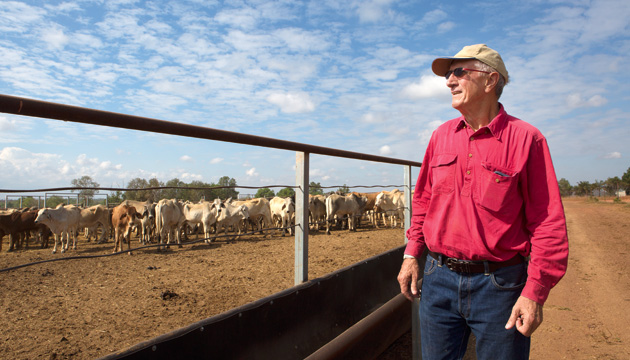Animal-welfare consultant Geoffrey Beere is working to assemble a recovery team for animals when disaster strikes overseas.
Story by David Hancock
When a disaster strikes anywhere in the world – be it an earthquake, tsunami, flood or fire – the first concerns are for the people it affects and how they can receive medical attention, and be housed, fed and evacuated. The welfare of animals runs a far second, with livestock often left to fend for themselves.
While Australian communities and animal-welfare organisations have efficient methods of dealing with animals caught up in natural disasters such as bushfires and floods, the same can’t be said for many other countries.
Geoffrey Beere, an Australian animal-welfare consultant with more than 25 years’ experience with Meat and Livestock Australia (MLA) in the area of live cattle and sheep export, wants to deal with the issue through a new business, Animals In Disasters.
“The mission of Animals In Disasters is to provide the resources necessary to reduce the suffering of animals caused by natural and man-made disasters,” he says. “In the event of a disaster, animals have difficulty surviving; they frighten easily and this severely compromises their welfare and chances of survival.”
Through decades of work as an abattoir manager and stock inspector in the Northern Territory, and overseeing live export to markets in Asia and the Middle East, Geoffrey has established a network of livestock experts in the fields of animal nutrition, health and transport. They have the skills to liaise with local communities and regional governments and know how to source feed and water supplies, transport animals, develop strategies to rebuild herds, reunite animals with their owners, and even euthanase animals or remove carcasses – under the OIE’s (World Organisation for Animal Health) globally recognised Terrestrial Animal Health Code.
“In disaster areas animals may be eaten, but the main reason they perish is because they don’t have anyone to look after them,” he says. “[There’s] no-one to cut and carry the feed or just tend to their welfare when they are exposed to extreme weather conditions.”
Geoffrey says it is not just natural disasters that throw communities into chaos; it is often human-created situations such as war. “One of the best examples is Syria,” he says. “There are thousands of people who have half a dozen sheep, goats or a few cattle. In a war they lose these animals and have no income – they also don’t have the means to produce milk, butter, yoghurt, cheese and other products to feed their families.
“Animals are important to the survival of families – if you come back to a place and there are no animals, you keep going backwards. Animals In Disasters can help people when they are resettled (or return home) by sourcing new animals so they can go back to some normality. Even better, if flocks or herds of animals can be kept together after people flee an area, it gives them something to come back to and the ability to look to the future.”
This story excerpt is from Issue #109
Outback Magazine: Oct/Nov 2016









